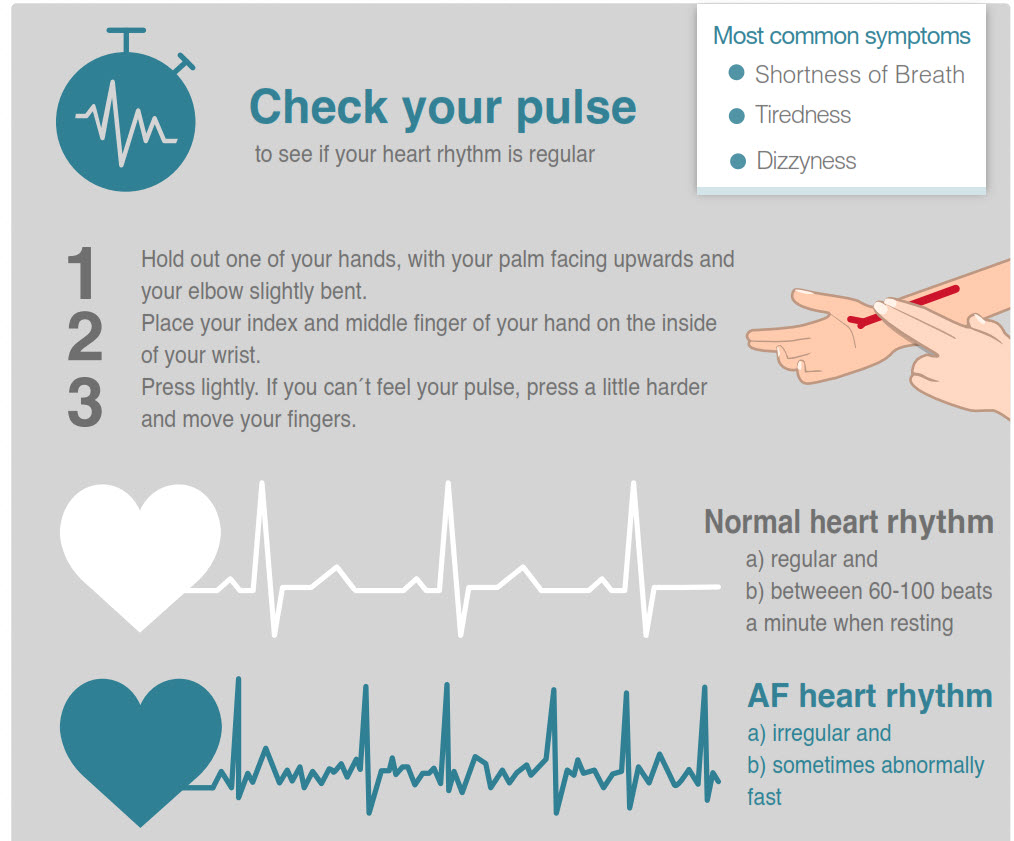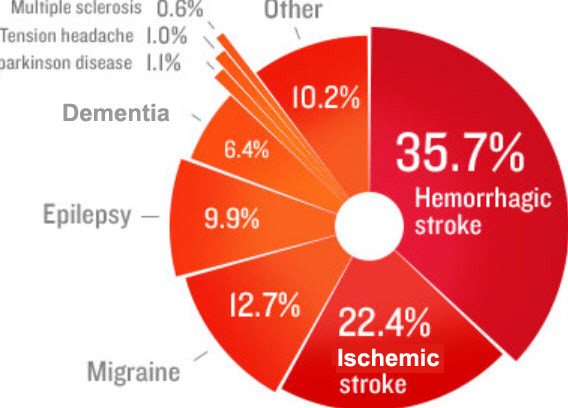 Stroke is one of many conditions that can lead to seizures, or epilepsy. You may think of these as ‘having fits’. In the UK this condition affects just under 1% of the population. Around 5% of people who have a stroke will have a seizure within the following few weeks. These are known as acute or onset seizures and normally happen within 24 hours of the stroke.
Stroke is one of many conditions that can lead to seizures, or epilepsy. You may think of these as ‘having fits’. In the UK this condition affects just under 1% of the population. Around 5% of people who have a stroke will have a seizure within the following few weeks. These are known as acute or onset seizures and normally happen within 24 hours of the stroke.
The good news is that your risk of having a seizure lessens with time following your stroke. But, you’ve really got to take care. I see people regularly who have fits for the first time. It’s never fun, but luckily, as someone who has had controlled epilepsy for over 20 years I know exactly how to identify these very early (it’s not that hard really). Quickly get the person to the floor, gently, into the recovery position and call for an ambulance. If you have a list of all their medications on hand to tell the paramedic, that would be ideal.
You are more likely to have had one if you have had a severe stroke, a haemorrhagic stroke or a stroke involving the part of the brain called the cerebral cortex. My own epilepsy came only after subarachnoid haemorrhage, (an uncommon, very serious and often fatal type of stroke caused by bleeding on the surface of the brain)
The causes of seizures are complex. Cells in the brain communicate with one another and with our muscles by passing electrical signals along nerve fibres. If you have epilepsy this electrical activity can become disordered and a sudden abnormal burst of electrical activity in the brain can lead to a seizure.
There are over 40 different types of seizures that can occur, but the most common ones are partial seizures or generalised seizures.
Partial or focal seizures only occurs in part of your brain. You may remain conscious and aware of your surroundings during a partial seizure (called a simple partial seizure) or you may become confused and unable to respond (a complex partial seizure). The symptoms you experience during a partial seizure will depend on which part of your brain has been affected. You may feel changes in sensation such as a tingling feeling, which spreads to other parts of your body.
Commonly people experience a rising feeling in their stomach (a bit like when you go over a humpback bridge). This is called an ‘epigastric rising sensation’. You may also experience uncontrollable stiffness, twitching or turning sensation in a part of the body such as your arm or hand, and/or disturbances in your vision, such as seeing flashing lights.
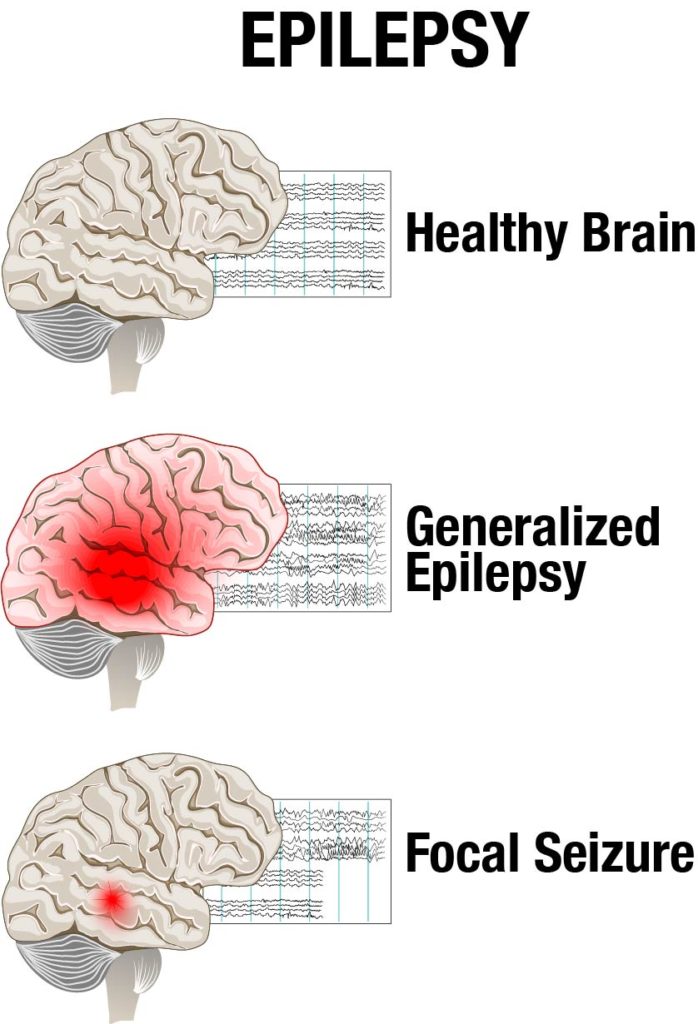 People can actually be taught to ‘ward off fits’! I learned the hard way how to do this. It’s a real trick of the trade you can use as a stroke survivor! Jut get in touch with me and I’ll tell you how I do it. 2004 was the last time I personally had a fit. I developed a 3-stage process which is remarkably successful. Part psychological and part-physical, it just works for me and might work for you too.
People can actually be taught to ‘ward off fits’! I learned the hard way how to do this. It’s a real trick of the trade you can use as a stroke survivor! Jut get in touch with me and I’ll tell you how I do it. 2004 was the last time I personally had a fit. I developed a 3-stage process which is remarkably successful. Part psychological and part-physical, it just works for me and might work for you too.
Since 2004 and 2019, I’ve controlled my fits and manipulated the levels of the drug in my body so that it can cope with changing body-weight. Putting on muscle was the main reason why I had to increase the dosage of my pills. More on anti-convulsants (or anti-epileptic drugs) below.
Generalised seizures involve both sides of your brain. There are several types of generalised seizures. Tonic-clonic seizures are the most common and widely recognised type. During a tonic-clonic seizure you lose consciousness, your muscles go stiff and you usually fall backwards. I used to fall forwards. I know this because I used to wake up not knowing what had happened to me, but seeing a massive carpet-burn on my forehead. You really do basically stiffen up and go down like a brick!
After losing consciousness, your muscles tighten and relax in turn, causing your body to jerk (convulse). Your breathing may become difficult and you may lose control of your bladder. This convulsive phase of the seizure should only last a minute or two.
Other types of seizures include tonic seizures (where your muscles go suddenly still but you do not have convulsions), clonic seizures (you have convulsions but no muscle stillness beforehand), atonic seizures (you suddenly lose all muscle tone and go limp), or myoclonic seizures where you experience a brief muscle jerk similar to the jerk you sometimes get as you fall asleep. A secondary generalised seizure is when a partial seizure spreads to both sides of the brain. Stroke-onset seizures are often of this type.
Most seizures stop by themselves and last between two and five minutes. After a seizure you may feel tired or confused. The time it takes to recover varies from person to person. Sometimes after a seizure associated with stroke, you will have temporary weakness, which may last for a few hours.
If a seizure lasts for 30 minutes or longer, or you have a series of seizures without consciousness being regained in-between (status epilepticus), your body struggles to circulate oxygen properly and this is an emergency. Your family or carer should call emergency services immediately if you have a seizure that lasts for more than five minutes or if one seizure follows another without you regaining consciousness in-between.
IMPORTANT: If you think you have had a seizure, and are not in the hospital, you should see your GP immediately, and then referred as soon as possible to a specialist. You may not be able to remember the seizure so if someone else witnessed it, it might help if they see the specialist with you. The specialist will ask you questions about what happened. This may be enough to make a diagnosis. However, further tests may be needed, particularly if the seizure did not involve convulsions.
You may have an electroencephalogram (EEG), which involves placing electrodes on your scalp and is painless. These measure electrical activity in your brain and can identify any unusual patterns. An EEG only shows what is happening in your brain at the time it is done, so a normal EEG does not necessarily mean that you do not have epilepsy.
It’s a good idea to keep a ‘seizure diary’ with the dates and times of your attacks, what happened, and any possible triggers, such as alcohol, or stress. It means you can narrow it down to factors such as: ‘am I missing taking my pills by half an hour to an hour?’, or ‘have I just been in very stressful situation?’ Both of these were big triggers for me. Flashing lights can be a trigger (photosensitive epilepsy) though this is not common as people think.
There is currently no cure for epilepsy, but medication can usually control seizures and allow you to lead a normal life. Which treatment you have will depend on the type of seizures you’ve had, how frequent they are, other effects of your stroke, for instance if you have problems swallowing, and any other medication you are taking.
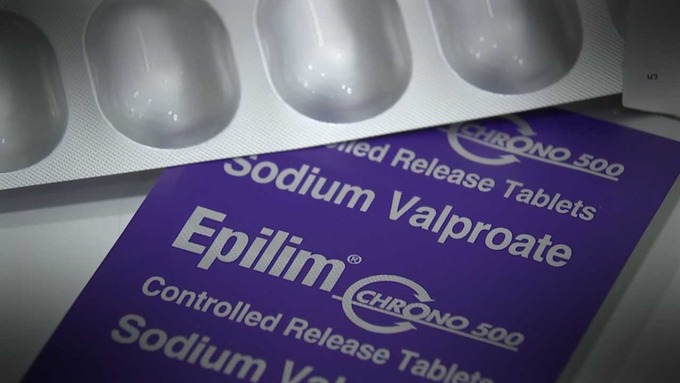 Anti-epileptic medications (AEDs) work by preventing excessive build-up of electrical activity in the brain, which is causing the seizures. Unfortunately, the normal activity of the brain can be affected, leading to drowsiness, dizziness, and confusion amongst other side effects. Once your body is used to the medication, these side effects may disappear.
Anti-epileptic medications (AEDs) work by preventing excessive build-up of electrical activity in the brain, which is causing the seizures. Unfortunately, the normal activity of the brain can be affected, leading to drowsiness, dizziness, and confusion amongst other side effects. Once your body is used to the medication, these side effects may disappear.
Your doctor may start you on a low dose and increase it gradually to reduce the chances of unpleasant side effects. If you can’t tolerate the medications, then you must tell your GP as there are choices of treatments, and the science is progressing all the time. There are many safe and reliable AEDs available, and you will find one that suits your individual case. The choice of AED used for you will depend upon your type of epilepsy, sex, and any other medications you may be taking. I take the above medication: the good thing about these is you can get the Chrono-Release version, which release the medication throughout the 12 hour intervals per day you should take them.
Many people, including myself, get back to extremely busy schedules after stroke, and simply take their pills. One tip is that often AED dosages are often quite highly-tuned. If you put on bodyweight, you may begin to have enough in your system without realising. This was a total ‘game-changer’ for me and has been so for many others. It’s also a good idea, if you are having fits, to get a medical bracelet which identifies you as someone who experiences epileptic fits..
Important tips:
- Develop your own ‘early-warning system’ and find out how to ward off fits as they come on.
- Find an excellent Epilepsy Consultant: they are worth their weight in gold.
- Never suddenly stop taking your medication: this will cause you to have seizures and possibly develop prolonged seizures (status epilepticus). Although studies show that the risk of having a seizure-related accident decreases as the length of time since the last seizure increases, there are still a great deal of road traffic accidents found to have been caused by people coming off anti-convulsants. Medication should only be stopped with medical supervision.
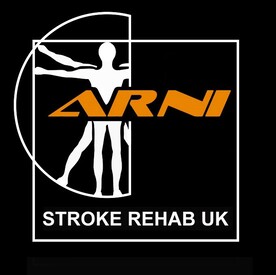


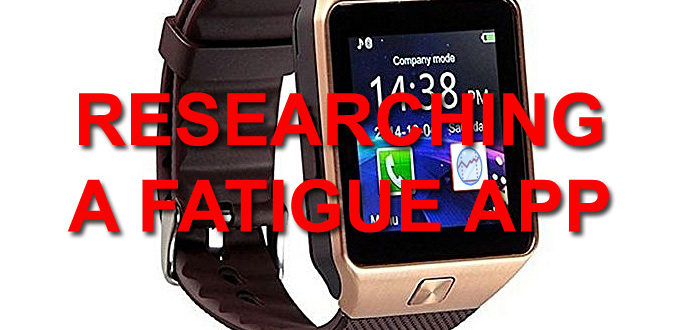
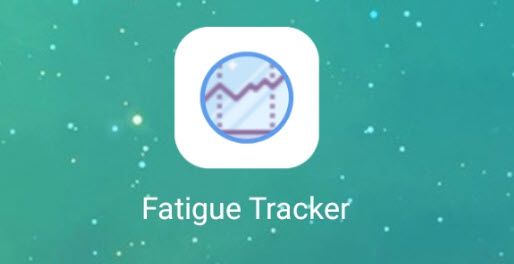 Fatigue is often experienced after acquired brain injury and people often try to manage via fatigue strategies such as planning and pacing. In order to use such strategies, the individual needs to build a picture of how their fatigue affects them in daily life. Usually, a daily diary sheet of sleep, rest, activity and fatigue is completed. Apps on smart phones are able to collect “in the moment” information about people’s fatigue experiences and to collect information about sleep and rest patterns. This information could help the person with brain injury, their carers and their therapists to learn about their fatigue more effectively, and identify triggers and patterns of fatigue.
Fatigue is often experienced after acquired brain injury and people often try to manage via fatigue strategies such as planning and pacing. In order to use such strategies, the individual needs to build a picture of how their fatigue affects them in daily life. Usually, a daily diary sheet of sleep, rest, activity and fatigue is completed. Apps on smart phones are able to collect “in the moment” information about people’s fatigue experiences and to collect information about sleep and rest patterns. This information could help the person with brain injury, their carers and their therapists to learn about their fatigue more effectively, and identify triggers and patterns of fatigue. A student researcher conducting his doctorate at Oxford Brookes University has developed an early prototype of an app, based on interviews with people with brain injury. This app works on android mobile phones and asks the user (who has experienced a stroke or other brain injury) to rate their fatigue, identify what they were doing at the time… and to complete a reaction time test.
A student researcher conducting his doctorate at Oxford Brookes University has developed an early prototype of an app, based on interviews with people with brain injury. This app works on android mobile phones and asks the user (who has experienced a stroke or other brain injury) to rate their fatigue, identify what they were doing at the time… and to complete a reaction time test.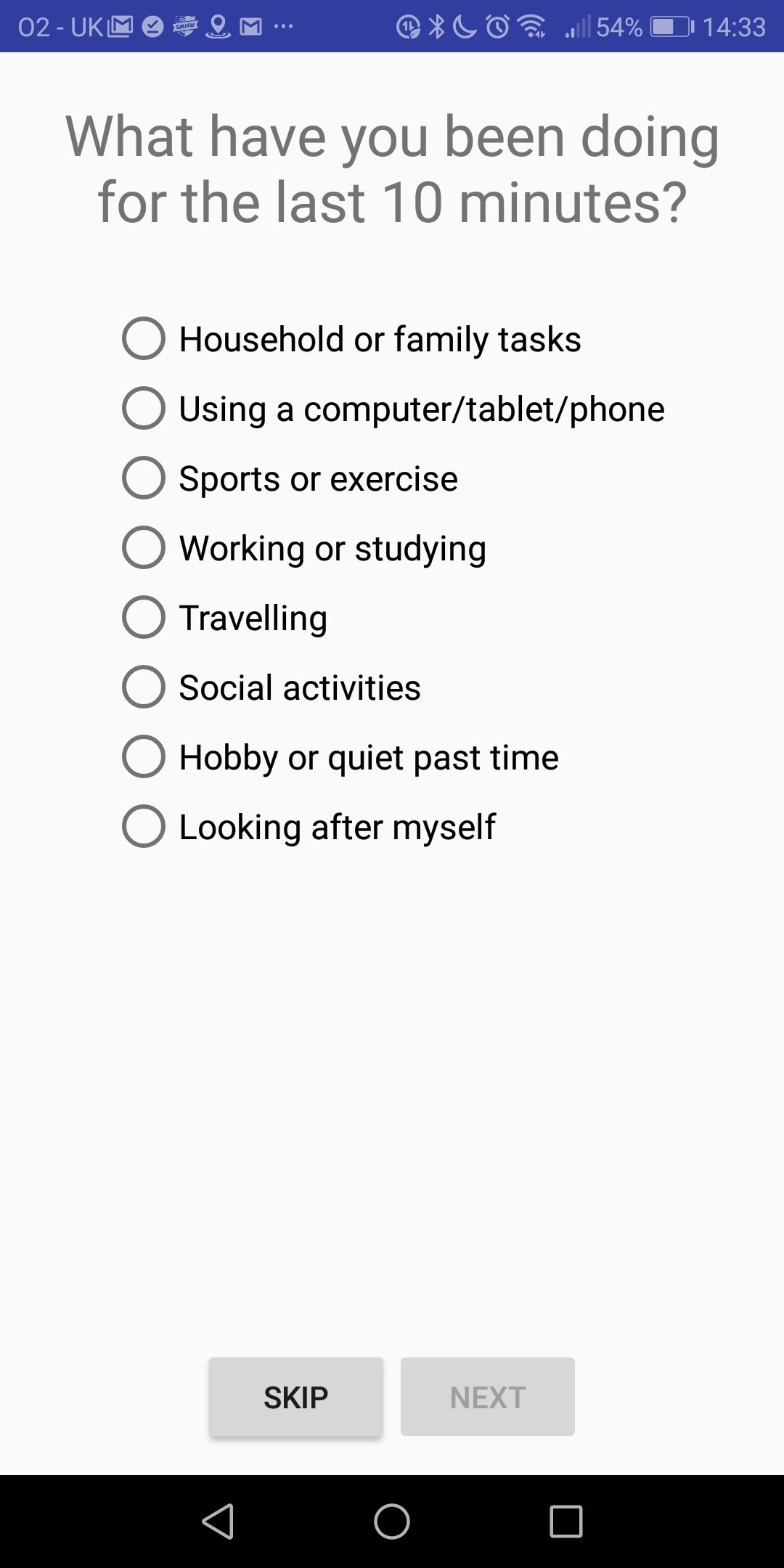
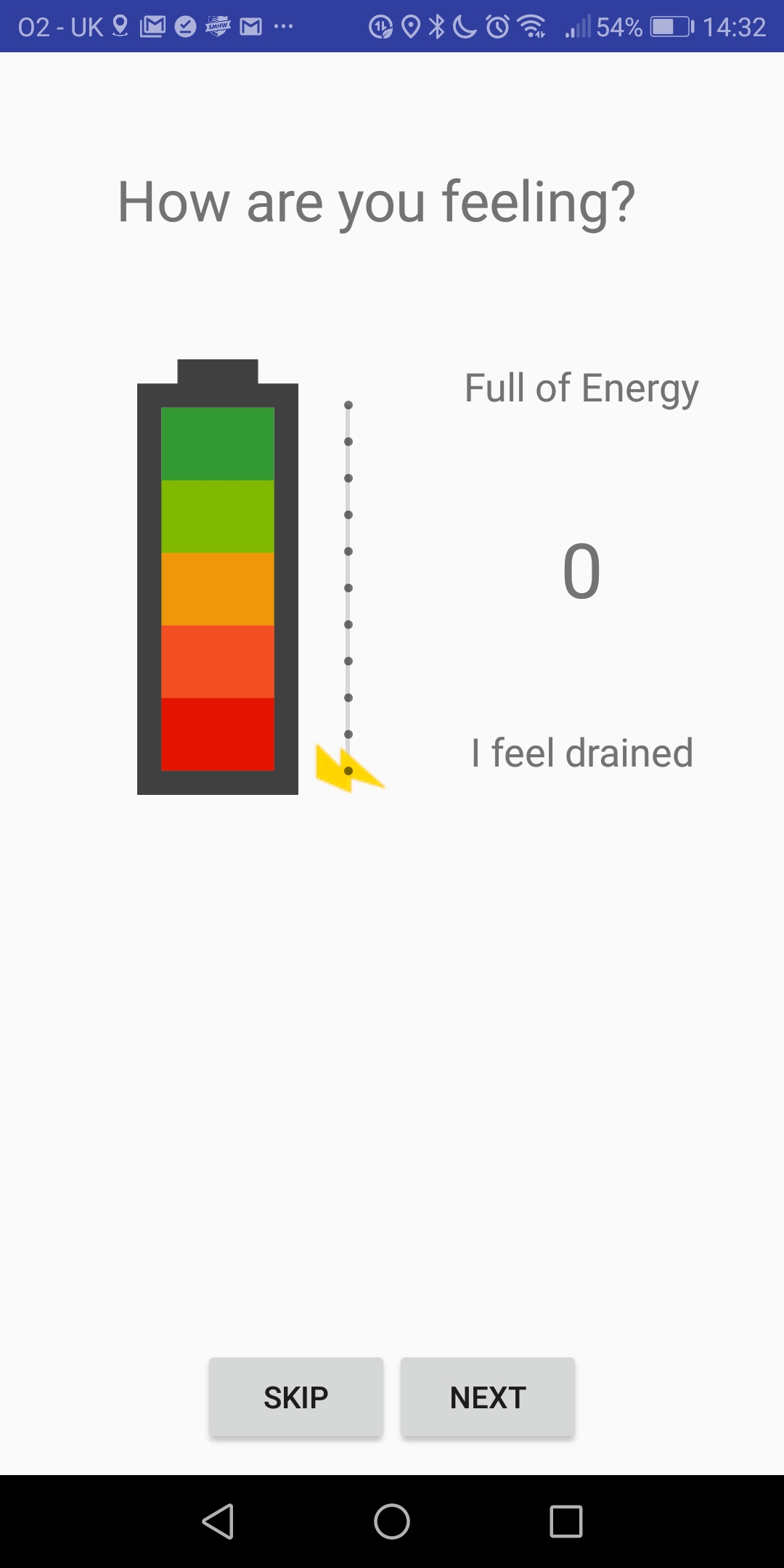
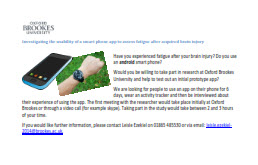
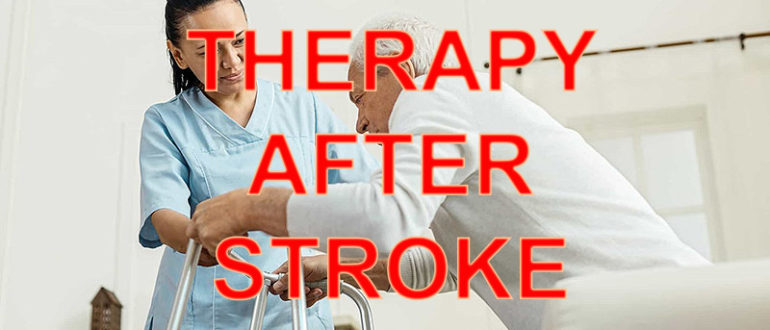
 If you’re a current patient reading this, both are about to become your best friends. They are also going to be pushing you hard. This is for a very good reason however. They are going to get you moving. Focusing mainly on your physical rehabilitation, physiotherapists and occupational therapists usually build custom plans to fit these needs.
If you’re a current patient reading this, both are about to become your best friends. They are also going to be pushing you hard. This is for a very good reason however. They are going to get you moving. Focusing mainly on your physical rehabilitation, physiotherapists and occupational therapists usually build custom plans to fit these needs. 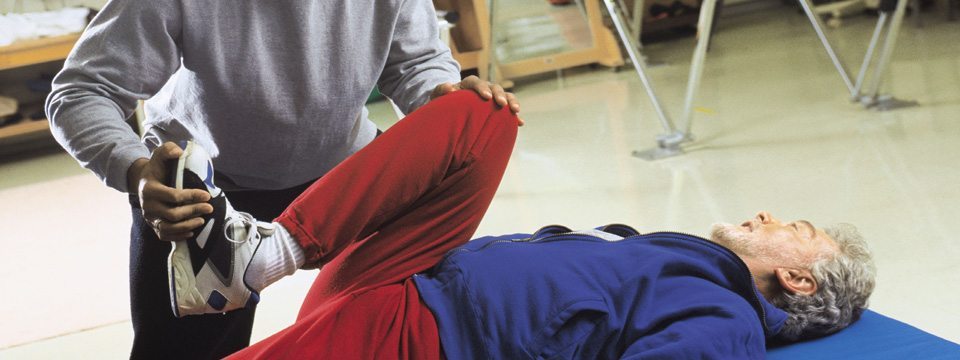 Physiotherapy begins with the most basic tasks and movements, with the aim of protecting your more-affected side from injury. These gradually progress to exercises and tasks that aim to improve your balance, help you relearn basic coordination skills and functional tasks such as successfully handling objects and walking. During this time, what’s your overall mission to be? The answer is ‘everything you humanly can’. Along with post-stroke weakness in one or more limbs, stroke survivors of all ages frequently are de-conditioned as a result of immobility, fatigued on a daily basis and often have insufficient underlying motor activity to start the kind of task-related practice they need to do, which does make everything much harder.
Physiotherapy begins with the most basic tasks and movements, with the aim of protecting your more-affected side from injury. These gradually progress to exercises and tasks that aim to improve your balance, help you relearn basic coordination skills and functional tasks such as successfully handling objects and walking. During this time, what’s your overall mission to be? The answer is ‘everything you humanly can’. Along with post-stroke weakness in one or more limbs, stroke survivors of all ages frequently are de-conditioned as a result of immobility, fatigued on a daily basis and often have insufficient underlying motor activity to start the kind of task-related practice they need to do, which does make everything much harder.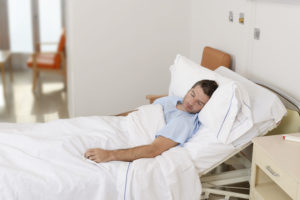 Survivors are noted to be inactive (and alone, in therapy terms) for much of the day as inpatients. This is time that is acknowledged by
Survivors are noted to be inactive (and alone, in therapy terms) for much of the day as inpatients. This is time that is acknowledged by 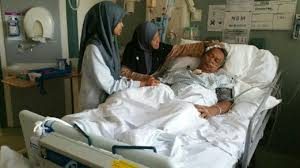 good thing to do so – it may not be, depending on daily presentation) that will be in play. One thing stands out from the evidence: that it has been shown that family participation in exercise routines for stroke patients empowers the caregiver’s help and may reduce their stress levels. Which is definitely a good thing. Making family members, carers and friends feel they are useful and contributing to the process is good.
good thing to do so – it may not be, depending on daily presentation) that will be in play. One thing stands out from the evidence: that it has been shown that family participation in exercise routines for stroke patients empowers the caregiver’s help and may reduce their stress levels. Which is definitely a good thing. Making family members, carers and friends feel they are useful and contributing to the process is good.
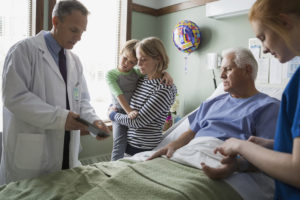 Information provision remains a commonly reported unmet need in rehab. Stroke survivors and carers consistently report that they do not know enough about the mechanisms, cause, and consequence of stroke. It is difficult to know whether this is a true expression of lack of needed knowledge or a reflection of stroke survivors’ and carers’ continued post-stroke uncertainty. A
Information provision remains a commonly reported unmet need in rehab. Stroke survivors and carers consistently report that they do not know enough about the mechanisms, cause, and consequence of stroke. It is difficult to know whether this is a true expression of lack of needed knowledge or a reflection of stroke survivors’ and carers’ continued post-stroke uncertainty. A  Similarly for upper limb, perhaps
Similarly for upper limb, perhaps 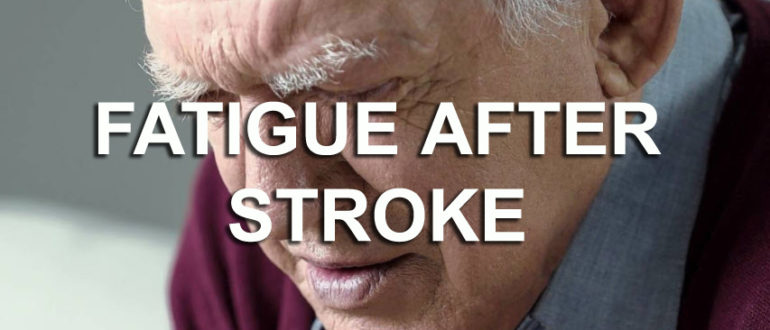
 Research into fatigue is at its very early stages. Work to contribute towards a treatment has now been spearheaded by Dr Anna Kuppuswamy, the lead researcher on the project.
Research into fatigue is at its very early stages. Work to contribute towards a treatment has now been spearheaded by Dr Anna Kuppuswamy, the lead researcher on the project.
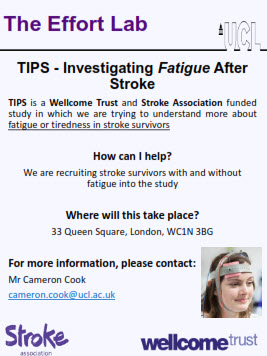

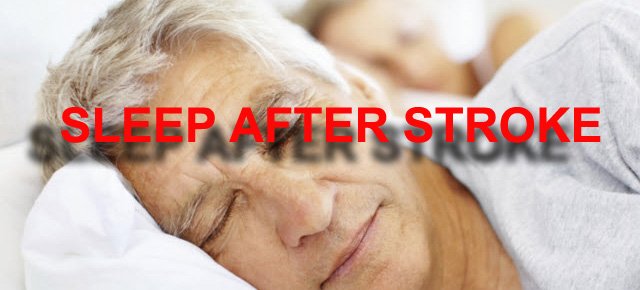
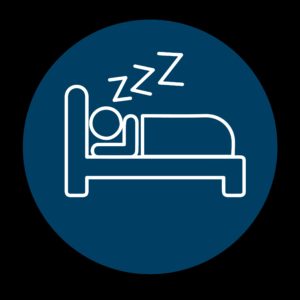 Researchers at the University of Oxford are currently investigating how sleep is affected by stroke.
Researchers at the University of Oxford are currently investigating how sleep is affected by stroke.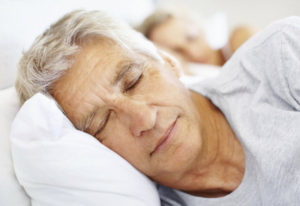 We know that sleep plays an important role in learning. Studies have shown that if you take two groups of people and teach them the same skill, such as juggling, then allow one group to sleep for a few hours and keep the other group awake, the sleep group will perform significantly better when retested as they have been able to consolidate the memories of learning the skill through sleep.
We know that sleep plays an important role in learning. Studies have shown that if you take two groups of people and teach them the same skill, such as juggling, then allow one group to sleep for a few hours and keep the other group awake, the sleep group will perform significantly better when retested as they have been able to consolidate the memories of learning the skill through sleep.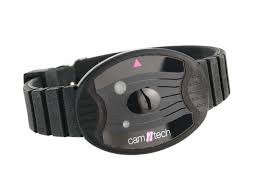 The current study involves coming to a research centre in Oxford for one session to complete a couple of motor assessments with the upper limbs and to answer a couple of questionnaires about your sleep and mood. Then researchers will set you up with a pair of sleep monitoring wrist watches for you to wear for a week with a simple sleep diary asking what times you go to bed and get up each day.
The current study involves coming to a research centre in Oxford for one session to complete a couple of motor assessments with the upper limbs and to answer a couple of questionnaires about your sleep and mood. Then researchers will set you up with a pair of sleep monitoring wrist watches for you to wear for a week with a simple sleep diary asking what times you go to bed and get up each day. If you would like to join this study/find out more, please feel free to contact the researchers:
If you would like to join this study/find out more, please feel free to contact the researchers:
 In the UK, stroke services are developing/referring in to stroke-specific community exercise programmes. The system is reasonably analogous to the very well-established rehabilitation services for cardiac disease patients which usually start after usual rehabilitation has ended.
In the UK, stroke services are developing/referring in to stroke-specific community exercise programmes. The system is reasonably analogous to the very well-established rehabilitation services for cardiac disease patients which usually start after usual rehabilitation has ended.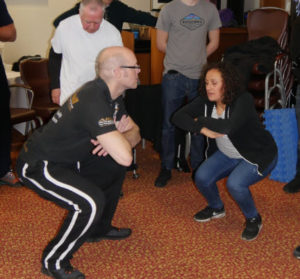 ARNI offers group classes rarely, preferring to concentrate charitable efforts on getting instructors into people’s homes in order to provide that vital one to one rehabilitation support that can be achieved at lowest cost.
ARNI offers group classes rarely, preferring to concentrate charitable efforts on getting instructors into people’s homes in order to provide that vital one to one rehabilitation support that can be achieved at lowest cost. Exercise is a physical activity that is planned, structured, repetitive, and purposeful. Physical activity includes any body movement that contracts your muscles to burn more calories than your body would normally do so just to exist at rest. Although learning to enjoy and plan structured exercise into your routine would definitely improve fitness, it is not the only way to improve fitness. Activities of daily life keep your body moving and still count toward the recommended amount of weekly physical activity. Most importantly, no matter what your current fitness level, you are able to improve your physical fitness and therefore, your heart health, by increasing physical activity and/or exercise as you are able.
Exercise is a physical activity that is planned, structured, repetitive, and purposeful. Physical activity includes any body movement that contracts your muscles to burn more calories than your body would normally do so just to exist at rest. Although learning to enjoy and plan structured exercise into your routine would definitely improve fitness, it is not the only way to improve fitness. Activities of daily life keep your body moving and still count toward the recommended amount of weekly physical activity. Most importantly, no matter what your current fitness level, you are able to improve your physical fitness and therefore, your heart health, by increasing physical activity and/or exercise as you are able.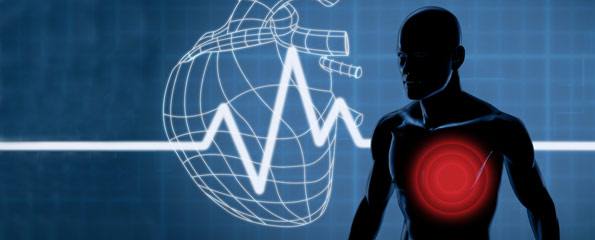 Cardiovascular exercise covers everything from walking, jogging or running over-ground or on a treadmill (with or without bodyweight support such as the Alter-G anti-gravity treadmill), to cycling, recumbent stepping or swimming. Many people call it ‘cardio’ exercise.
Cardiovascular exercise covers everything from walking, jogging or running over-ground or on a treadmill (with or without bodyweight support such as the Alter-G anti-gravity treadmill), to cycling, recumbent stepping or swimming. Many people call it ‘cardio’ exercise.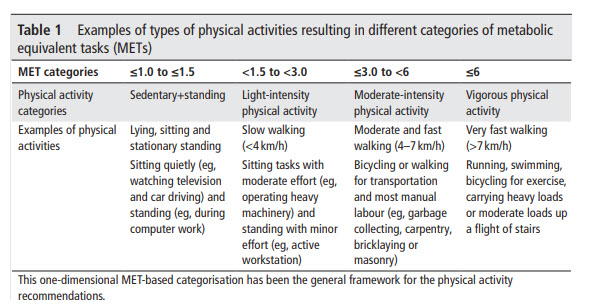
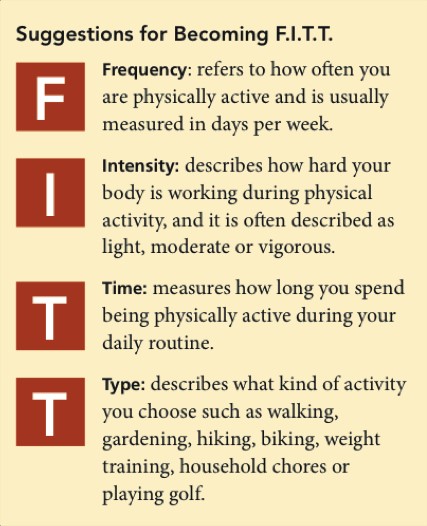
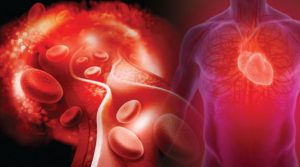 In terms of your arteries, aerobic exercise decreases what is called arterial stiffness, this allows for the blood to be pushed along the arteries through proper dilation and contractibility, with an adequate amount of pressure.
In terms of your arteries, aerobic exercise decreases what is called arterial stiffness, this allows for the blood to be pushed along the arteries through proper dilation and contractibility, with an adequate amount of pressure.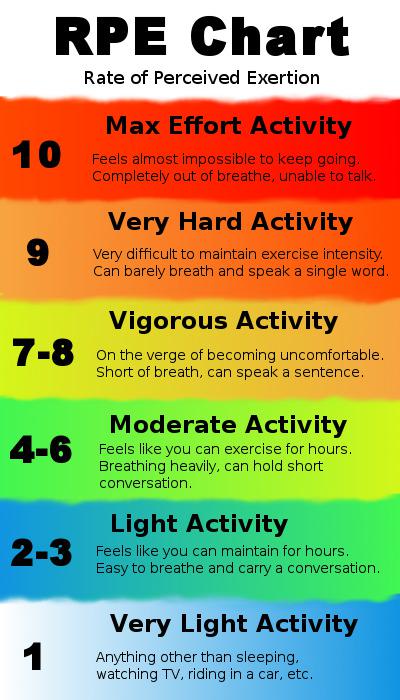 Intensity of exercise is dependent on your heart rate or the amount of effort you feel you are exerting. To determine how ‘hard’ your heart is working and the intensity during exercise is also depended on your age. The more intense the activity the higher your heart rate will be. You might hear the phrase Rate of Perceived Exertion or RPE for short.
Intensity of exercise is dependent on your heart rate or the amount of effort you feel you are exerting. To determine how ‘hard’ your heart is working and the intensity during exercise is also depended on your age. The more intense the activity the higher your heart rate will be. You might hear the phrase Rate of Perceived Exertion or RPE for short.
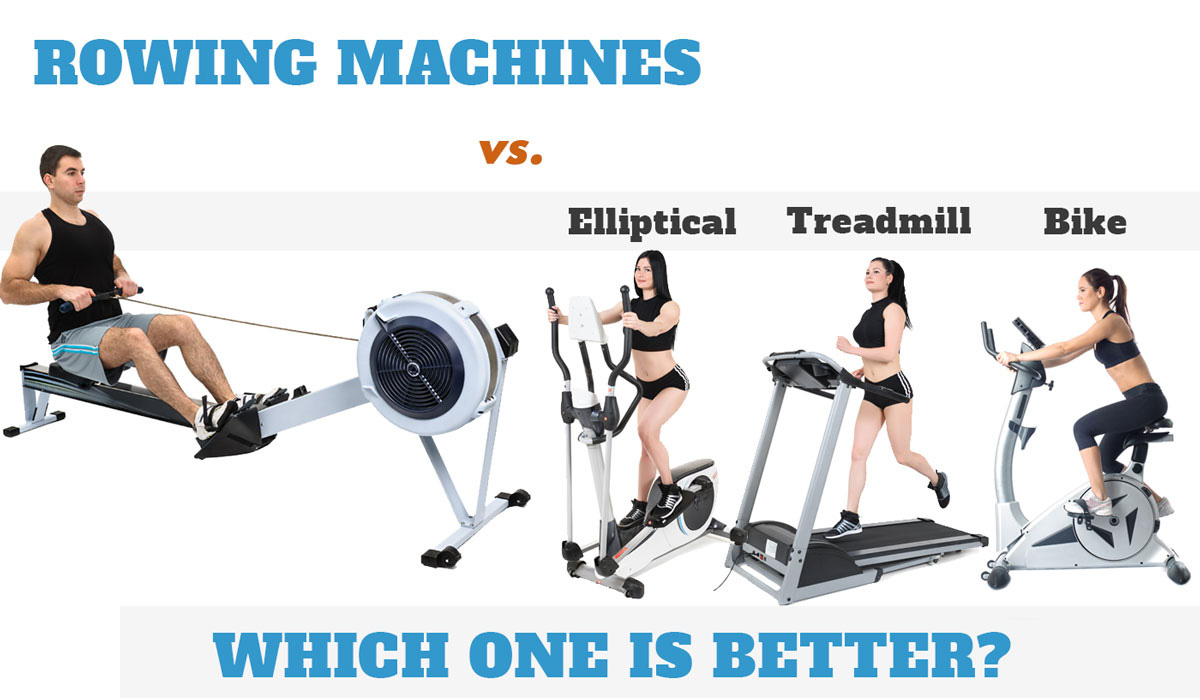 Cardio exercise. It’s a good idea to plan from the start, how you are going to get cardio exercise done by yourself at home. In the beginning you may be nervous about doing some exercise training at home without supervision, but if you’re smart about it you can do it safely and successfully.
Cardio exercise. It’s a good idea to plan from the start, how you are going to get cardio exercise done by yourself at home. In the beginning you may be nervous about doing some exercise training at home without supervision, but if you’re smart about it you can do it safely and successfully. I strongly advise the recumbent bicycle for stroke survivors with upper limb limitations – this solution is the best I’ve found.
I strongly advise the recumbent bicycle for stroke survivors with upper limb limitations – this solution is the best I’ve found. 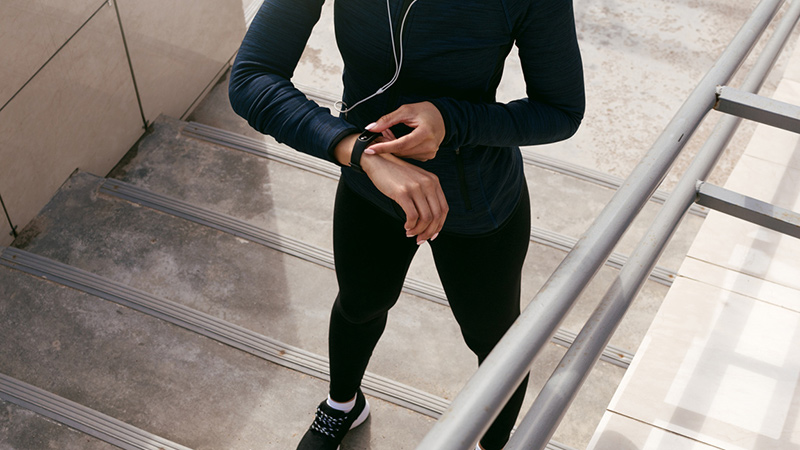 A final point: it’s a good idea to monitor yourself while exercising, so you can follow your own progress and also know when you need to push yourself a little further. There are several ways you can do this. Heart rate monitors are a great way to keep track of the intensity you are working at. Speak with your GP to find out what heart rate you should be working at for your age.
A final point: it’s a good idea to monitor yourself while exercising, so you can follow your own progress and also know when you need to push yourself a little further. There are several ways you can do this. Heart rate monitors are a great way to keep track of the intensity you are working at. Speak with your GP to find out what heart rate you should be working at for your age. In terms of physical activity, I encourage you to incorporate a variety of exercises in to your lifestyle. Particularly things like getting out of your residence and walking as well as you can (accompanied as appropriate), swimming (swimming classes for stroke survivors are often available and run by some ARNI INSTRUCTORS) and are a great way to socialise while achieving something.
In terms of physical activity, I encourage you to incorporate a variety of exercises in to your lifestyle. Particularly things like getting out of your residence and walking as well as you can (accompanied as appropriate), swimming (swimming classes for stroke survivors are often available and run by some ARNI INSTRUCTORS) and are a great way to socialise while achieving something.


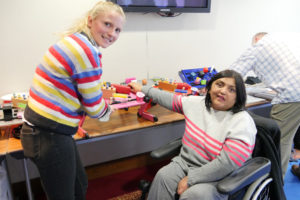
 You might also want to buy some cards to support ARNI!
You might also want to buy some cards to support ARNI! 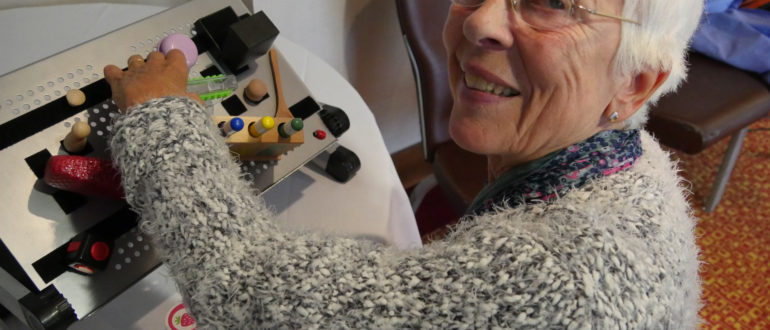
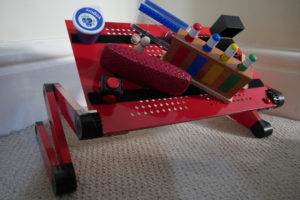
 These are really great for people to try, if there is spasticity or flaccidity present – and this is the stepping stone that we have found for countless ARNI patients over the years that works to progress their hand from one phase to another. Best advice is always start off with the wooden pegs in slots. Physiotherapists have, among their many upper limb measures, a test called the ‘9 hole peg test’. This is an idea borrowed and scaled up from that test, with slots to enable practice. Advice is (all present in the Guide), is to start off with these, working on ‘getting the gap’.
These are really great for people to try, if there is spasticity or flaccidity present – and this is the stepping stone that we have found for countless ARNI patients over the years that works to progress their hand from one phase to another. Best advice is always start off with the wooden pegs in slots. Physiotherapists have, among their many upper limb measures, a test called the ‘9 hole peg test’. This is an idea borrowed and scaled up from that test, with slots to enable practice. Advice is (all present in the Guide), is to start off with these, working on ‘getting the gap’.

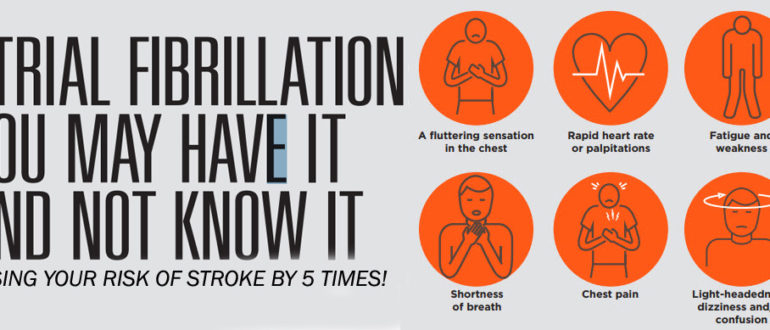
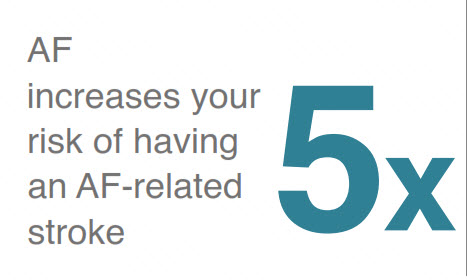 Given that around 1 in 5 women, and around 1 in 6 men will have a stroke in their life, you really need to be aware and checking up on this.
Given that around 1 in 5 women, and around 1 in 6 men will have a stroke in their life, you really need to be aware and checking up on this.
